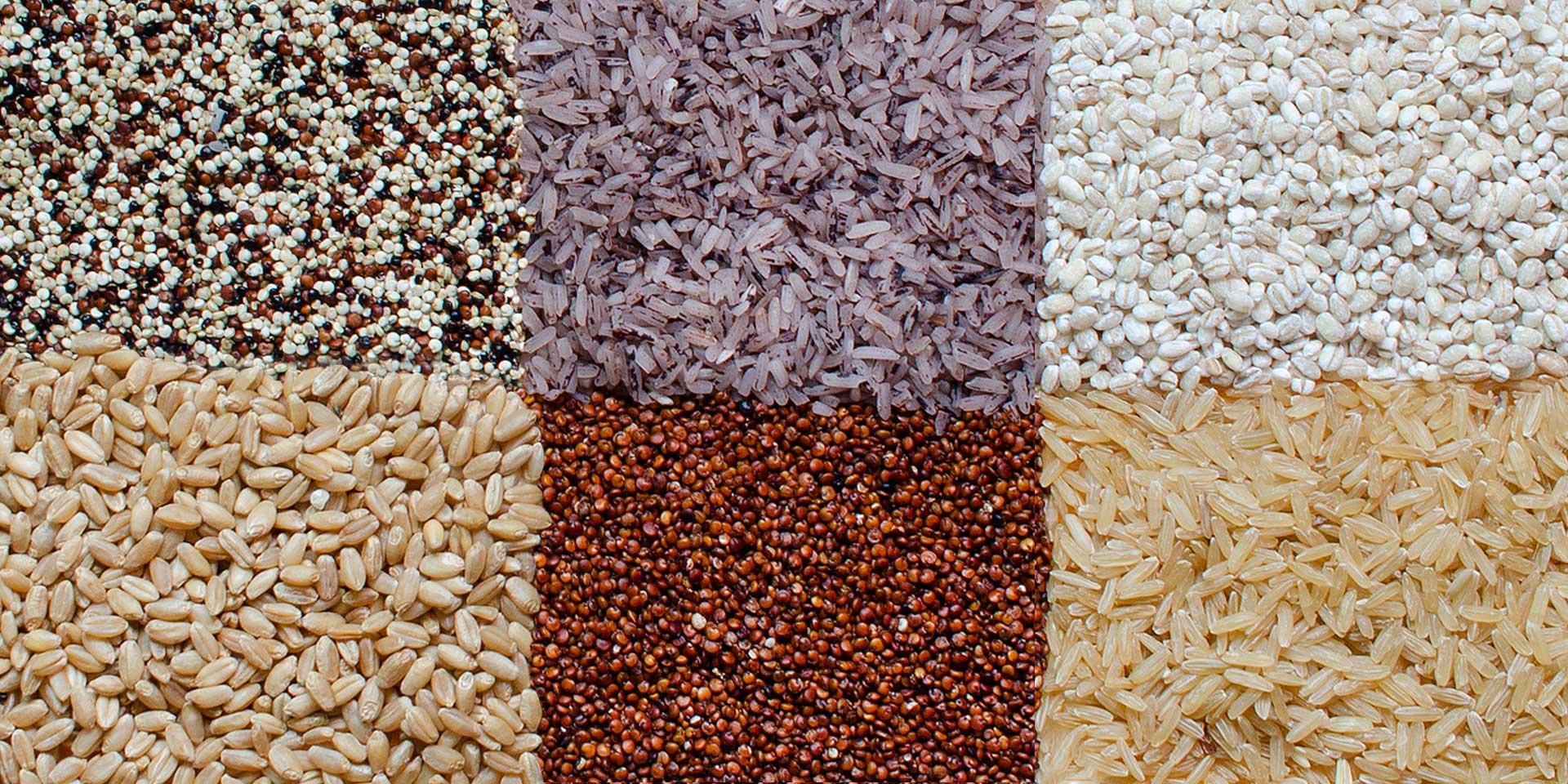A rye renaissance is coming
While wheat is by far the most widely grown grain in the United States, some would argue that the country was built on rye. Beginning in the 1620s, when the Dutch brought it to the colonies, this flavorful, hardy grain was a consequential crop.
Flourishing in the poor soil, rye fed people in colonial America, replenished land denigrated by tobacco growing and provided straw for animal bedding and for the manufacture of paper. But as the United States expanded west, wheat became king. It grew well and people liked the taste — and the advances of the Industrial Revolution, including the mechanization of agriculture and the introduction of the railroad, propelled it to the fore. Gone, too, was the once-ubiquitous rye whiskey, as Prohibition nearly put an end to rye’s last vestiges.
In 2023, it’s estimated that only 10.4 million bushels of rye were produced in the U.S., compared to wheat’s 1.8 billion — most of it winter rye, also called cereal rye, grown for food and forage but also, mostly, as cover crop to nurture and protect soil during the off-season. (Less common is spring rye, which does not require vernalization and generally produces lower yields, and neither are to be confused with annual ryegrass, also a cover crop, or perennial ryegrass, a lawn grass.) Still, despite its relegation to the status of minor grain, the diversity rye provides in cropping, culinary uses and soil health — the same reasons that it was so crucial in colonial times — is making it increasingly appealing today.
“It’s not a new crop by any means,” says Dr. Heather Darby, agronomist and soils specialist at the University of Vermont. In fact, cultivated rye entered the archeological record about 13,000 years ago, a wild grass originating in Western Asia that went on to become a staple crop in Northern Europe after it was brought inadvertently, some contend, by Roman soldiers. “But these days,” Darby says, we’re “definitely seeing a revival.” A wave of farmers, bakers, distillers and brewers are embracing this small ancient grain — both for its unique flavor and culinary applications, she explains, “but also all of its regenerative ag[riculture] properties that make it a great crop for farmers during climate change.”
Why grow rye?
When Claire Marin, founder and CEO of Pollinator Spirits, first started her distillery in 2013, her goal was to support local farmers and sustainable agriculture in upstate New York. She likes rye for its agronomic benefits and “its spiciness, complexity [and] fiery nature to the palate.” A beekeeper, she also wanted to make a spirit that she could add a drop of honey to — something that would marry well with the sweetness while maintaining its own flavor. Pollinator’s first product was a honey rye whiskey. “How could you not look at rye?” she says. “It’s compelling.”
Rye is remarkably climate-resilient: It is the most drought-resistant cereal crop, is relatively disease resistant and thrives in cold weather. It can grow in marginal soil and across a whole range of soil types.
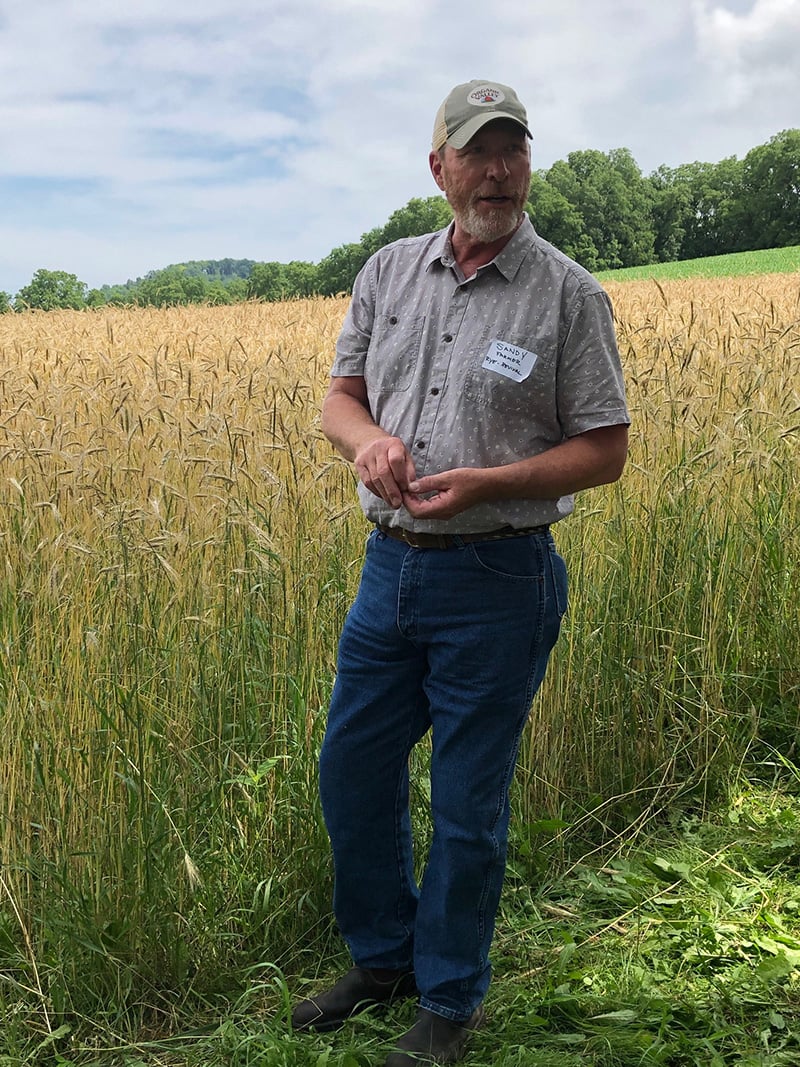
Rye can also build soil health and resilience in many ways. In addition to helping prevent soil erosion and runoff with its extensive deep root system, it produces biomass, sequesters carbon and is known as a “nitrogen scavenger” — absorbing excess nitrates from any previous harvests, not only lowering the need for inputs but also preventing nitrogen from leaching into waterways. Generally, it requires minimal to no tillage, with allelopathic properties that suppress weeds.
Rye can be planted later than other crops — in fact, it is the only grain that can be planted after corn and reliably produce a crop the following year — and be harvested earlier. That’s significant because, as Wisconsin farmer Sandy Syburg explains, the timing allows farmers to spread out their labor, diversify rotations and develop a plan, such as growing the grain with legume clover, that will fix the scavenged nitrogen and help reduce purchased soil inputs. “That’s where rye really shines,” he says. This cycle can’t be conducted with wheat, for example, which needs to be planted earlier to survive the winter.
Syburg is a member of Rye Revival, a nascent group seeking to expand enjoyment of and education about the grain. Growing rye also saves on larger external costs, he says, citing as an example the environmental damage to groundwater and rivers like the Mississippi when conventional fertilizer runs off corn and soybean farms. Rye can help reduce and eliminate the dead zones created by the pesticides, a personal goal of Syburg’s.
Thor Oechsner of Farmer Ground Flour, in New York’s Finger Lakes region, was another early adopter. He began growing the grain as cover crop seed in 1994, partially because his property is considered “highly erodible land.” Oechsner sensed the potential for food-grade rye around 2010, shortly after the mill opened, when he attended an event hosted by the Rye Bread Project at the now-defunct New Amsterdam Market. He tracked down a Polish variety called Danko, known for its deep, nutty flavor and plump kernels, from Canada, and became one of a handful of farmers in the Northeast supplying rye to bakers, maltsters, and distillers like Marin. After starting out with 15 acres, he now grows 175.
Reigniting interest
Darby has spent 20 years working with Vermont farmers to grow cover crop rye. But during that time, she also noticed a confluence of factors that would lead to her current work with rye as a grain — farmers’ desire to meet the needs of the state’s growing organic dairy market, increasingly in demand of feed, and culinary trends such as the locavore movement, spurring requests for local flour and baked goods, and the emergence of craft distilling.
Three years ago, with winter rye finally being grown all over the state, a lightbulb went off. “We’re growing thirty thousand acres of a grain that farmers feel comfortable growing now,” says Darby, but no human or animal ever ends up eating it. “It’s a shame that a crop that is so widely available and so widely known and grows so well under most weather doesn’t have a bigger market share. We need to make its benefits more known.”
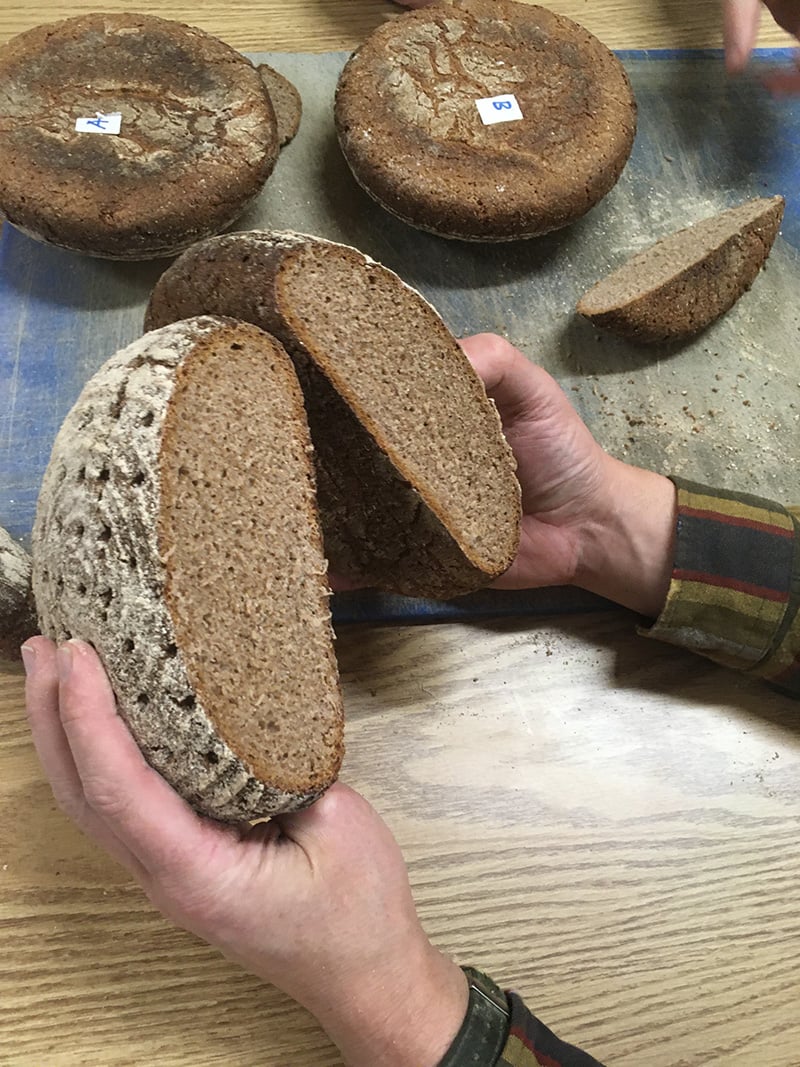
To further increase rye’s value to farmers, Darby partnered with June Russell, director of food programs at Glynwood Center for Regional Food & Farming and also a member of Rye Revival, on a four-year USDA grant to learn how to grow high-quality rye for food and beverage markets and develop a better understanding of varieties and their properties.
Rye is an “achievable” crop, says Russell, making it an easier entry into grain farming. In the case of flour, rye doesn’t have to meet the same specifications as bread wheat, requiring a lower “falling number” (an indicator of pre-harvest sprouting, which impacts enzymatic activity) to produce a quality bake. There is also room for error when it comes to mycotoxins, produced by certain naturally occurring molds, which can be an issue in wet climates like the Northeast: If mycotoxin levels are too high for the food-grade market, rye can sometimes still be sold to the distilling market, Russell says, because they do not survive the distilling process.
Russell and Darby’s work encompasses education and outreach, market analysis and applied research — “really basic work that shockingly doesn’t really exist specific to grain production,” Darby says, from planning dates to seed depth to varieties and which work best for different end uses.
Approximately 18 farmers in Vermont and New York have trialed 15 to 25 rye varieties per year since the project began. The second year of data collection was recently completed; five varieties have so far been identified as being potentially useful — including spicy Hazlet and mellow Serafino, which the team showed off at a “variety showcase” hosted by Glynwood and the Culinary Breeding Network in fall 2023.
Cultivating tastes
Many eaters are familiar with rye as an ingredient in bread. Still, consumers are sometimes confused as to what rye bread actually is — the popular association with caraway can get in the way of the grain’s actual flavor.
“The varieties can be really different, and can taste really different,” Darby explains, but the flavor profiles largely seen in rye are “kind of peppery spicy and brown spice notes, a kind of cinnamon, clove-y taste.” Still, because most grain breeding investment in the U.S. has been in wheat, the range of varieties available is currently limited. It can be tricky for consumers and even food professionals to describe what they’re looking for or to identify the varieties that can accomplish their goals. Sometimes, bakers and distillers may love a variety with poor yields — which doesn’t make economic sense to grow — and they’ll instead have to use what they can get.
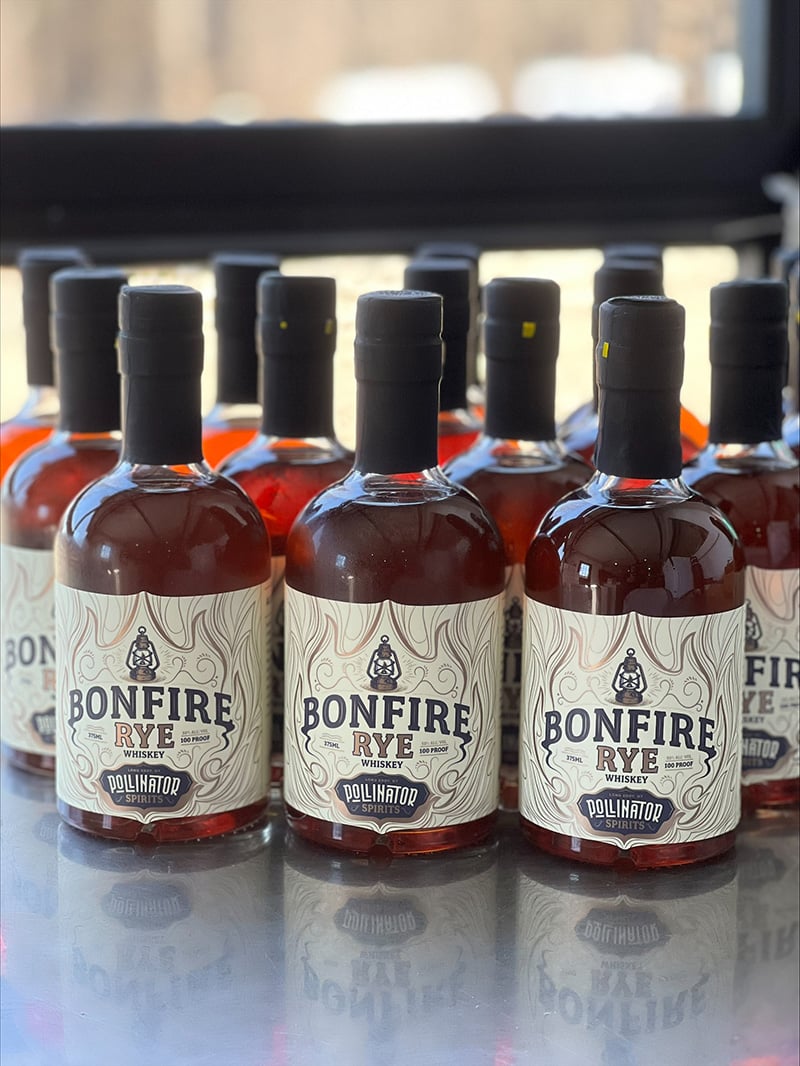
Anne Mayhew of LMNOP Bakery in Katonah, New York, has conducted baking tests for Russell, examining functionality and timing in processes like hydration and mixing. “I’ve always loved the flavor of it,” she says. “It’s different. It’s dark. And it’s a beautiful blue-green grain.” Mayhew, who incorporates rye flour into a variety of her baked goods, uses an unconventional 100 percent rye starter because “it added the flavor and ferment-y qualities of rye that I liked, and didn’t affect the structure,” she says, and it gives her flexibility in her fermentation schedule. She also notes that rye’s low gluten content makes it more easily digestible than wheat.
Along with conducting sensory baking evaluations to study texture, flavor and other elements of the final product, Russell sees potential in the distilling market and hopes to spearhead a longer-term study to see how different rye varieties express their spicy character (which she fondly calls “really opinionated”) in spirit form.
In 2015, six New York state distilleries founded the Empire Rye Whiskey Association and created Empire Rye, a distinctive New York state style of whiskey that uses a mashbill containing 75 percent state-grown rye. Russell plans to work with the group to coordinate their efforts and eventually establish an Empire Rye whiskey trail.
Marin points out that the craft distilling movement is based on supporting local agriculture. Everyone should understand, she says, that farmers must be able to sustain themselves without resorting to questionable or irresponsible practices — like growing GMO seeds for better short-term yield, even though long-term use imperils seed, soil and food system diversity. If farmers, worried they could lose their farms, don’t feel pressured to make those kinds of decisions, she says, “they’re going to make better choices and be able to stay true to their calling, which is to keep our state, earth and climate healthy.”
Building the rye business
For Syburg, the way forward for farmers looks like a three-legged stool of a business plan: seed, animal feed and food. Having a feed market is essential, he says, for times when the rye crop does not meet food-grade specifications, perhaps due to a poor growing season, but is still saleable. It is primarily hybrid rye that is grown for feed — offering a higher yield than open pollinated rye, which is more common for food-grade grains. Rye overall compares well to other grain feed because it contains phytonutrient compounds that help animals (like humans) with immune and digestive health. In fact, the European Union has mostly banned antibiotic usage in pigs after studies showed the practice wasn’t required after using rye in their feed.
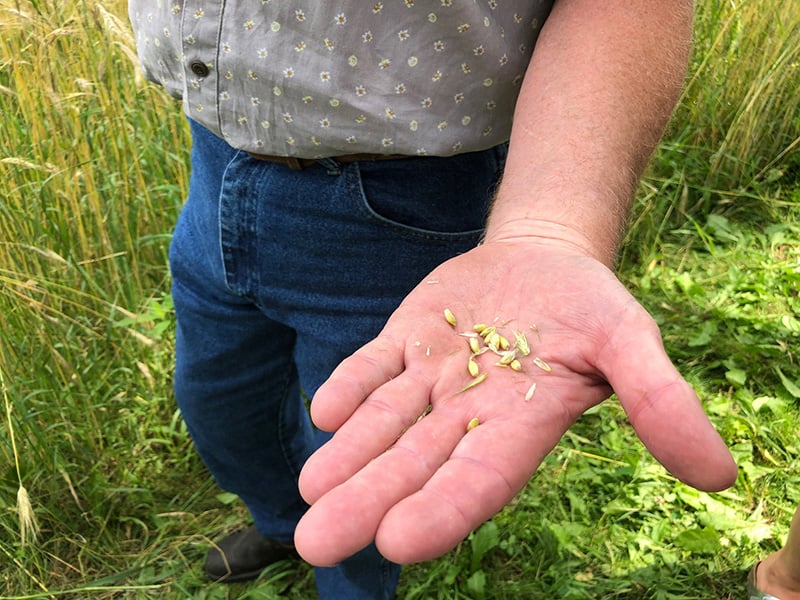
There is a market for rye here, Syburg notes, with the U.S. importing up to 13 million bushels yearly, mostly from Canada. Importantly, however, rye is not an insurable crop in most of the country — a risk many farmers can’t afford to take. Syburg is hopeful that will change. He’s discussed the topic at a meeting arranged by agricultural community colleagues with Under Secretary of Agriculture Jennifer Moffitt, who is helping facilitate further conversations with the USDA. But it might take more development to get more people growing rye: Before a farmer even thinks about crop insurance, for example, they need to be confident in the infrastructure and logistics like handling, processing and storage, currently much more robust for corn and soybeans.
Syburg is taking a bird’s-eye view on what he likens to a game of dominoes, admittedly unsure of what the sequence should be to see rye develop the place on the agricultural landscape that he believes it deserves. But he’s been heartened to see that fellow Wisconsin operation Meadowlark Organics, a small, family-run farm and mill, have tripled their rye milling from 1,000 to 3,000 bushels a year since Rye Revival was founded in 2020, a significant increase for a small outfit. With rye awareness growing and access to high-quality flour developing, those dominoes may be falling into place.
Get the latest food news, from FoodPrint.
By subscribing to communications from FoodPrint, you are agreeing to receive emails from us. We promise not to email you too often or sell your information.
Top photo: Loaves of 100 percent Rye Bread at LMNOP Bakery in Katonah, New York. Photo credit: Anne Mayhew, LMNOP Bakery.
More Reading
Can recycled soil blends support a more sustainable future?
September 5, 2025
This fall, get involved in one of these campus sustainability initiatives
August 26, 2025
Preserving heirloom date varieties in the Coachella Valley
August 21, 2025
A new book says tech-supported industrial ag will feed the world. Agroecologists would like a word.
July 9, 2025
Use a grocery store trip to teach kids environmental stewardship
July 7, 2025
Can rye growers get consumers and retailers excited about rye?
May 19, 2025
Can private grants fill regenerative agriculture's federal funding gap?
May 1, 2025
Edible landscaping is beautiful and delicious
April 18, 2025
How one New Jersey farm grows food year round
April 3, 2025
Returning seeds to their ancestors: Revitalizing biodiversity and foodways through plant rematriation
March 24, 2025

